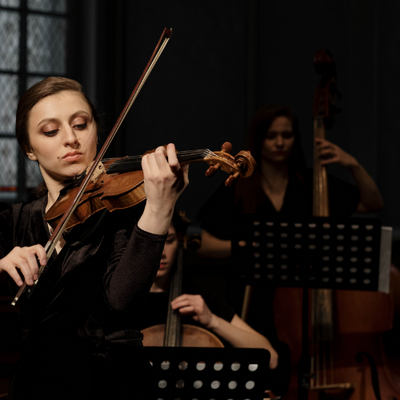 The strings on a violin, viola, or cello play a pivotal role in shaping its tone, responsiveness, and overall performance. Choosing the right strings can enhance your playing experience and bring out the best in your instrument, whether you are a beginner or a professional musician. With numerous options available, understanding the factors involved in selecting strings can feel daunting. This guide breaks down essential considerations and provides string selection tips to help you make an informed decision.
The strings on a violin, viola, or cello play a pivotal role in shaping its tone, responsiveness, and overall performance. Choosing the right strings can enhance your playing experience and bring out the best in your instrument, whether you are a beginner or a professional musician. With numerous options available, understanding the factors involved in selecting strings can feel daunting. This guide breaks down essential considerations and provides string selection tips to help you make an informed decision.
Understanding String Composition
Strings are made from three primary materials: gut, synthetic, and steel. Each material offers unique tonal characteristics and playing experiences.
- Gut Strings: Crafted from sheep gut and often wound with metal, these strings produce a warm, complex sound reminiscent of historical performance practices. They are well-suited to baroque and classical repertoire but require frequent tuning adjustments due to sensitivity to temperature and humidity changes.
- Synthetic Strings: Made from synthetic fibres like nylon or composite materials, these strings provide tonal warmth similar to gut but with improved stability and durability. They are a popular choice among musicians seeking a balance between tradition and modern convenience.
- Steel Strings: Known for their bright, focused sound and longevity, steel-core strings are often favoured by cellists and players of contemporary genres. These strings offer quick response and tuning stability, making them ideal for high-pressure performance environments.
Matching Strings to Your Instrument and Style

The type of instrument you play and your musical style greatly influence string selection. For example, a brighter violin might benefit from warmer strings to achieve a balanced tone, while a darker viola may come alive with strings that enhance clarity and brilliance.
For violins, brands such as Larsen Tzigane and Pirastro Evah Pirazzi Gold are highly regarded. The Larsen Tzigane strings are celebrated for their rich warmth and versatility, making them suitable for classical and romantic repertoire. In contrast, Evah Pirazzi Gold strings deliver powerful projection and a golden tone, ideal for soloists.
Cellists often gravitate towards Larsen Magnacore or Pirastro Permanent strings. Magnacore strings provide a well-rounded tone with excellent focus and depth, while Permanent strings offer a bright, direct sound, perfect for ensemble playing.
Balancing Tension
String tension - low, medium, or high - affects both the sound and playability of your instrument. Lower tension strings produce a softer, more nuanced tone but require precise bow control. Higher tension strings generate more volume and power but may place additional stress on your instrument and bowing arm.
For violists, Pirastro Obligato strings are a reliable choice for medium tension, offering a warm yet responsive sound. For cellists seeking higher tension strings, the Larsen Soloist Edition can provide the clarity and projection needed for performances.
Exploring String Combinations
Many players find that mixing and matching strings from different brands helps achieve their desired sound. For instance, pairing a warm G-string with a brighter E-string can create tonal balance across the instrument. Experimentation is key, but consulting with a luthier or experienced retailer can save time and provide valuable insights.
Caring for Your Strings

Once you've chosen your strings, proper maintenance ensures they perform at their best. Regularly clean the strings with a soft cloth to remove rosin build-up and sweat, as these can dampen sound quality and shorten the strings’ lifespan. Using appropriate care products, such as dedicated string cleaners or cleaning solutions designed for string instruments, can further protect the winding and enhance their longevity. Avoid using abrasive cleaners or excessive pressure, which can damage the winding.
Final Thoughts
Choosing the best violin strings, viola strings, or cello strings is both an art and a science. It requires understanding your instrument, your playing style, and the sound you wish to achieve. Brands like Larsen and Pirastro offer a diverse range of options to cater to every musician's needs, whether you are performing a classical sonata or exploring modern compositions. With careful selection and proper care, the right strings can truly harmonise with your instrument, enhancing every note you play.
If you're still unsure, seeking advice from a trusted retailer or teacher can provide clarity and confidence in your decision-making process. After all, finding the perfect strings is an investment not just in your instrument but in the music you bring to life.





















